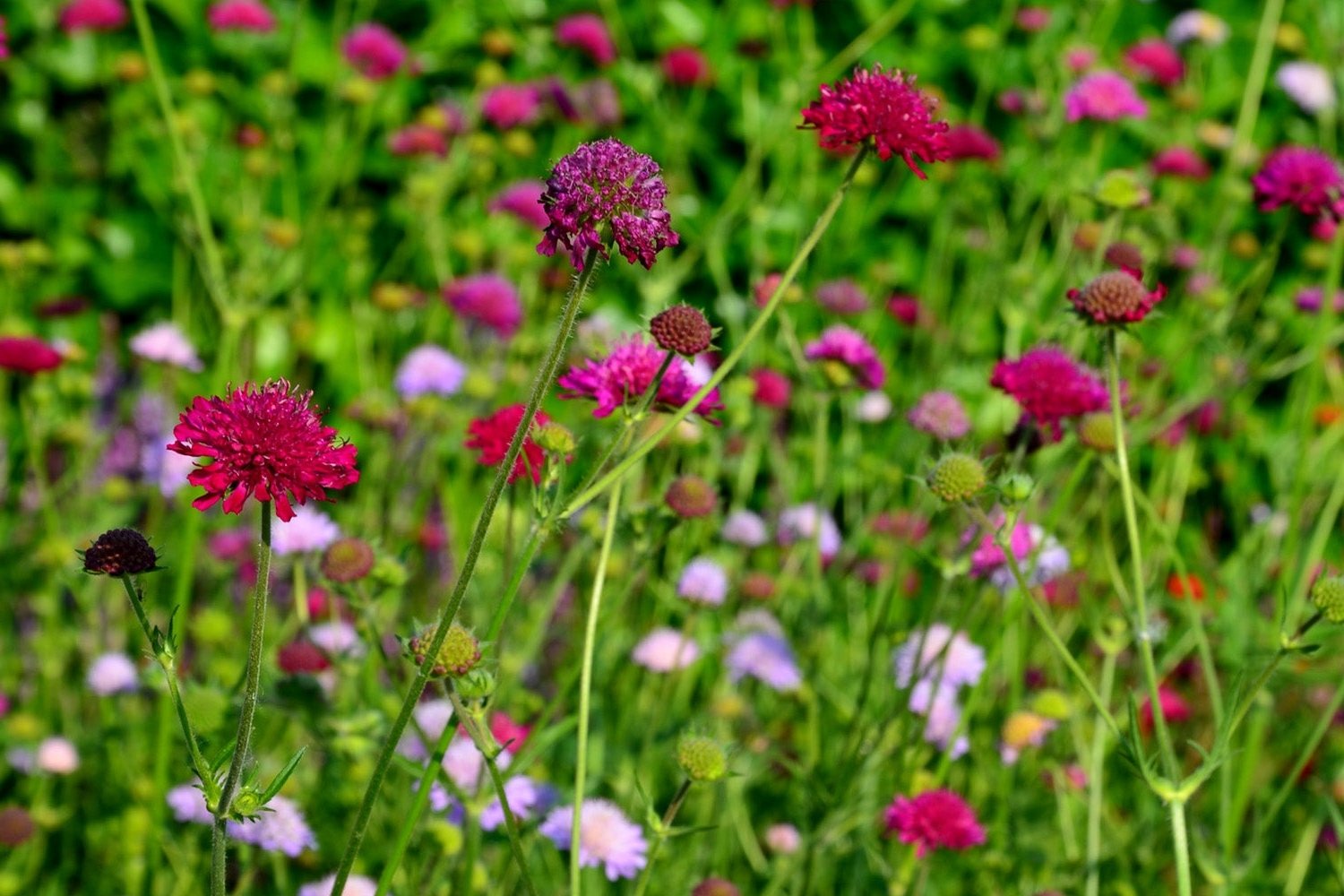
Knautia is a captivating plant that often goes unnoticed in gardens. Did you know that this perennial beauty, also known as Macedonian Scabious, belongs to the honeysuckle family? Its vibrant blooms attract pollinators like bees and butterflies, making it a favorite among gardeners. Knautia thrives in well-drained soil and can tolerate drought, making it a hardy choice for various climates. With its long blooming season, from late spring to early autumn, it adds a splash of color to any landscape. Whether you're a seasoned gardener or a newbie, Knautia offers both aesthetic appeal and ecological benefits. Ready to learn more? Dive into these 25 fascinating facts about Knautia!
What is Knautia?
Knautia, a genus of flowering plants in the honeysuckle family, is known for its vibrant blooms and hardy nature. These plants are often found in meadows, gardens, and wild landscapes. Let's dive into some fascinating facts about Knautia.
-
Knautia is named after the German botanist Christian Knaut, who lived in the 17th century.
-
The most common species is Knautia arvensis, also known as field scabious.
-
Knautia flowers are typically purple, pink, or blue, adding a splash of color to any garden.
-
These plants are perennials, meaning they live for more than two years.
-
Knautia is native to Europe but has spread to other parts of the world.
Growing Knautia
Knautia is a favorite among gardeners due to its low maintenance and beautiful blooms. Here are some interesting facts about growing Knautia.
-
Knautia prefers well-drained soil and full sun but can tolerate partial shade.
-
These plants are drought-tolerant once established, making them ideal for xeriscaping.
-
Knautia can be propagated by seeds or division, offering flexibility for gardeners.
-
Deadheading, or removing spent flowers, encourages more blooms throughout the season.
-
Knautia attracts pollinators like bees and butterflies, supporting local ecosystems.
Knautia in the Wild
Knautia's natural habitats are as diverse as the plant itself. Here are some facts about Knautia in the wild.
-
Knautia arvensis is commonly found in meadows, grasslands, and roadside verges.
-
These plants can grow up to 1 meter tall, with a spread of about 50 cm.
-
Knautia's deep root system helps it survive in poor soil conditions.
-
The flowers of Knautia are often visited by various insects, including hoverflies and beetles.
-
Knautia plays a role in traditional medicine, with some species used to treat skin conditions.
Knautia in Culture
Knautia has also found its way into cultural references and traditional practices. Here are some cultural facts about Knautia.
-
In folklore, Knautia was believed to ward off evil spirits.
-
The plant's common name, field scabious, comes from its historical use in treating scabies.
-
Knautia has been featured in various botanical illustrations and herbals over the centuries.
-
Some gardeners plant Knautia to create a cottage garden aesthetic.
-
Knautia is sometimes used in floral arrangements due to its long-lasting blooms.
Interesting Tidbits
Here are some more intriguing facts about Knautia that you might not know.
-
Knautia's flowers have a pincushion-like appearance, giving rise to the nickname "pincushion flower."
-
The plant's leaves are often covered in fine hairs, giving them a slightly fuzzy texture.
-
Knautia can be susceptible to powdery mildew, especially in humid conditions.
-
Despite its delicate appearance, Knautia is quite hardy and can withstand cold winters.
-
Knautia is a member of the Caprifoliaceae family, which also includes honeysuckle and elderberry.
The Final Bloom
Knautia, with its vibrant colors and fascinating history, is more than just a pretty flower. It’s a resilient plant that attracts pollinators like bees and butterflies, making it a gardener’s ally. Its medicinal properties, used since ancient times, add another layer to its charm. Whether you’re a seasoned gardener or a newbie, Knautia offers something for everyone. It’s easy to grow, requires minimal care, and thrives in various conditions. Plus, its long blooming season ensures your garden stays colorful for months. So, next time you’re planning your garden, consider adding Knautia. It’s not just a plant; it’s a piece of living history that brings beauty and benefits to your outdoor space. Happy gardening!
Was this page helpful?
Our commitment to delivering trustworthy and engaging content is at the heart of what we do. Each fact on our site is contributed by real users like you, bringing a wealth of diverse insights and information. To ensure the highest standards of accuracy and reliability, our dedicated editors meticulously review each submission. This process guarantees that the facts we share are not only fascinating but also credible. Trust in our commitment to quality and authenticity as you explore and learn with us.
